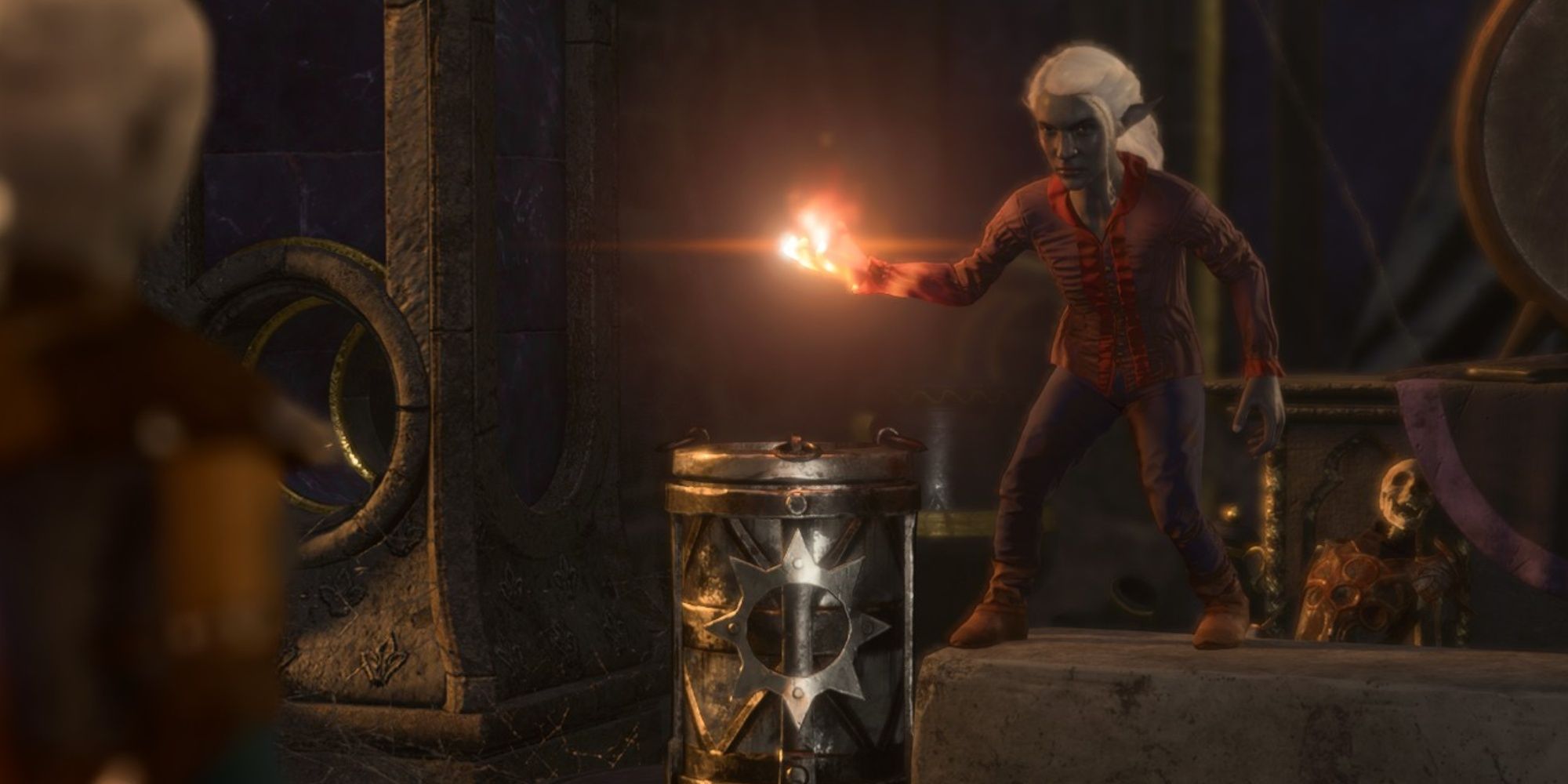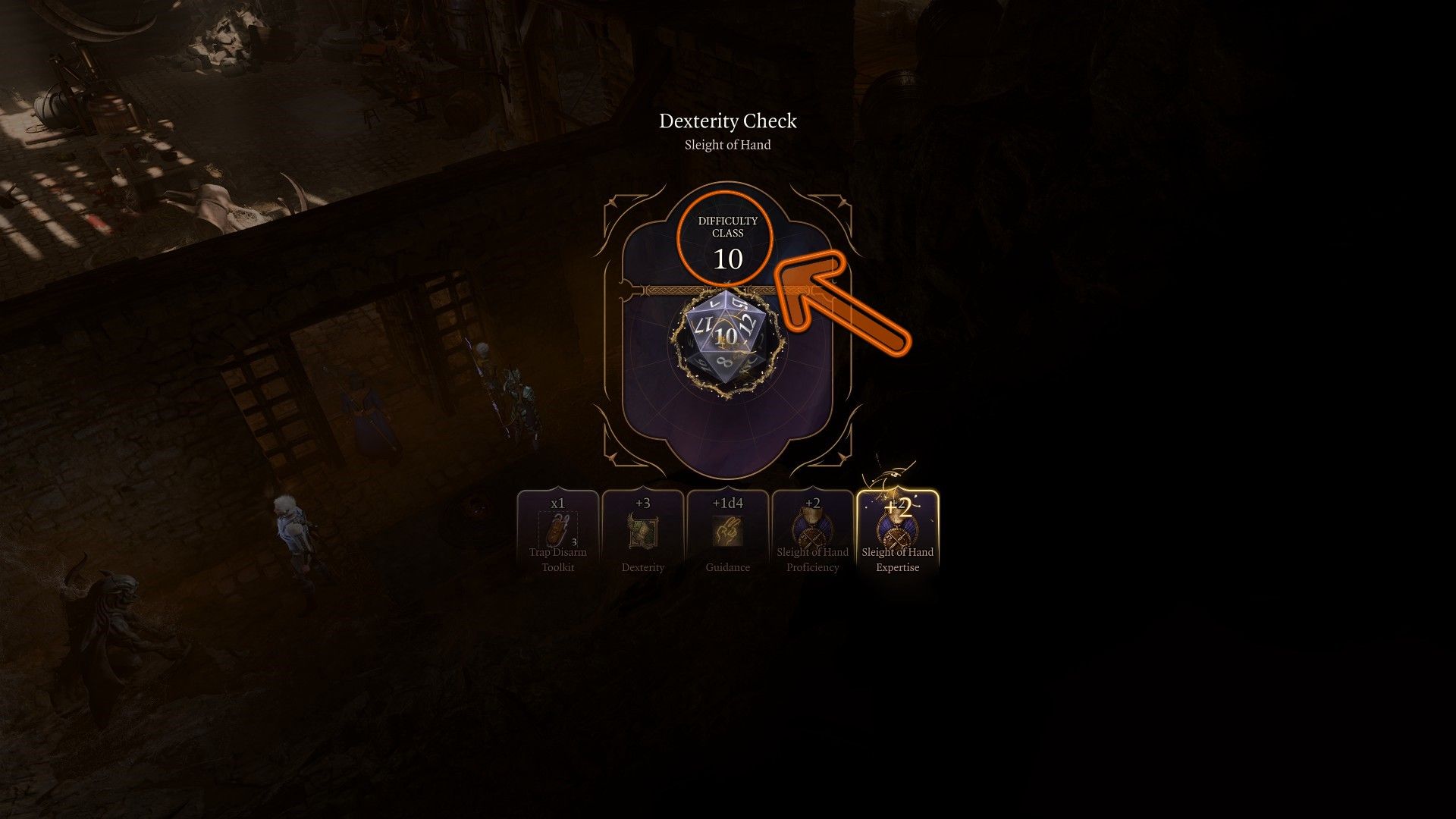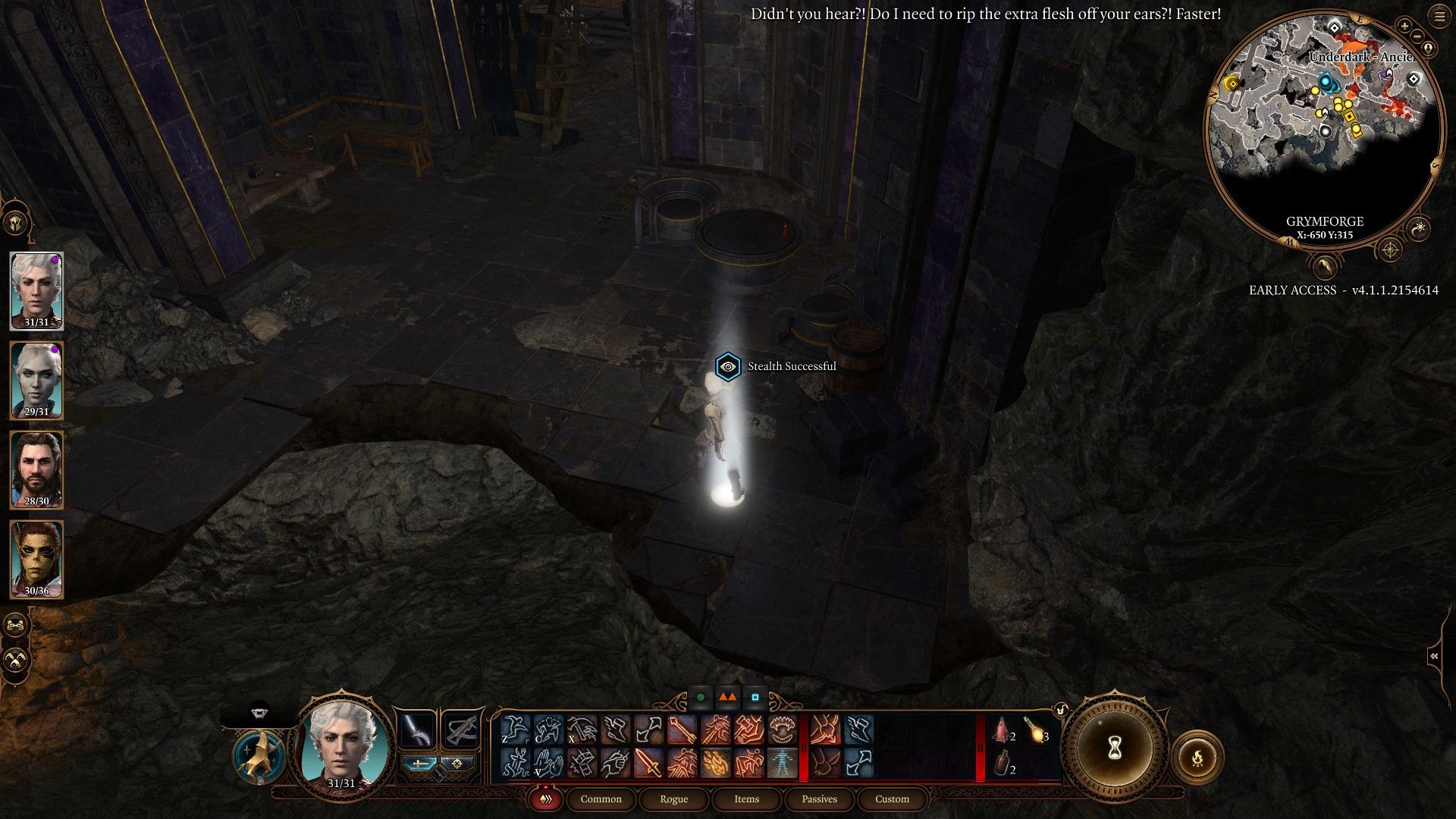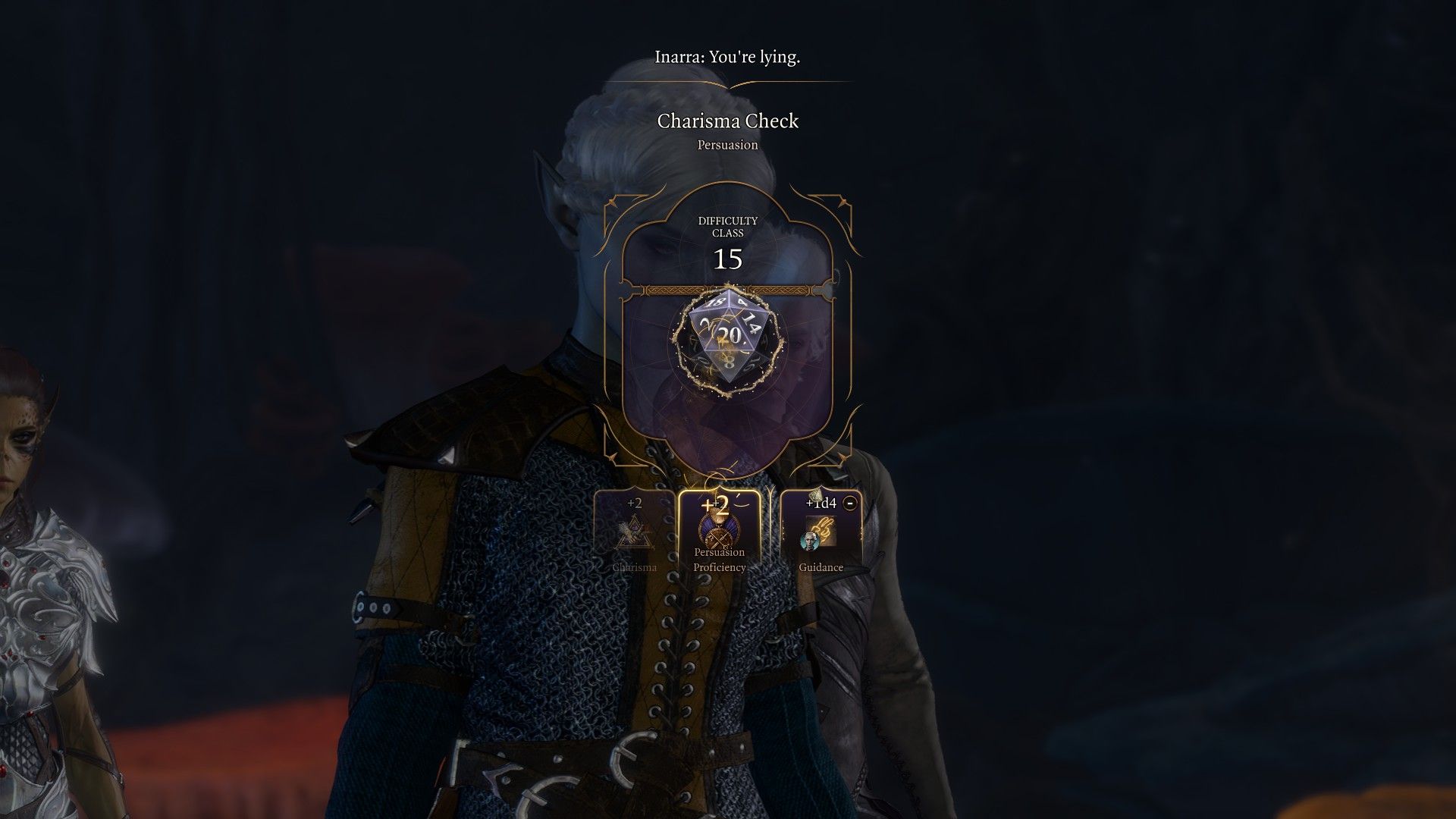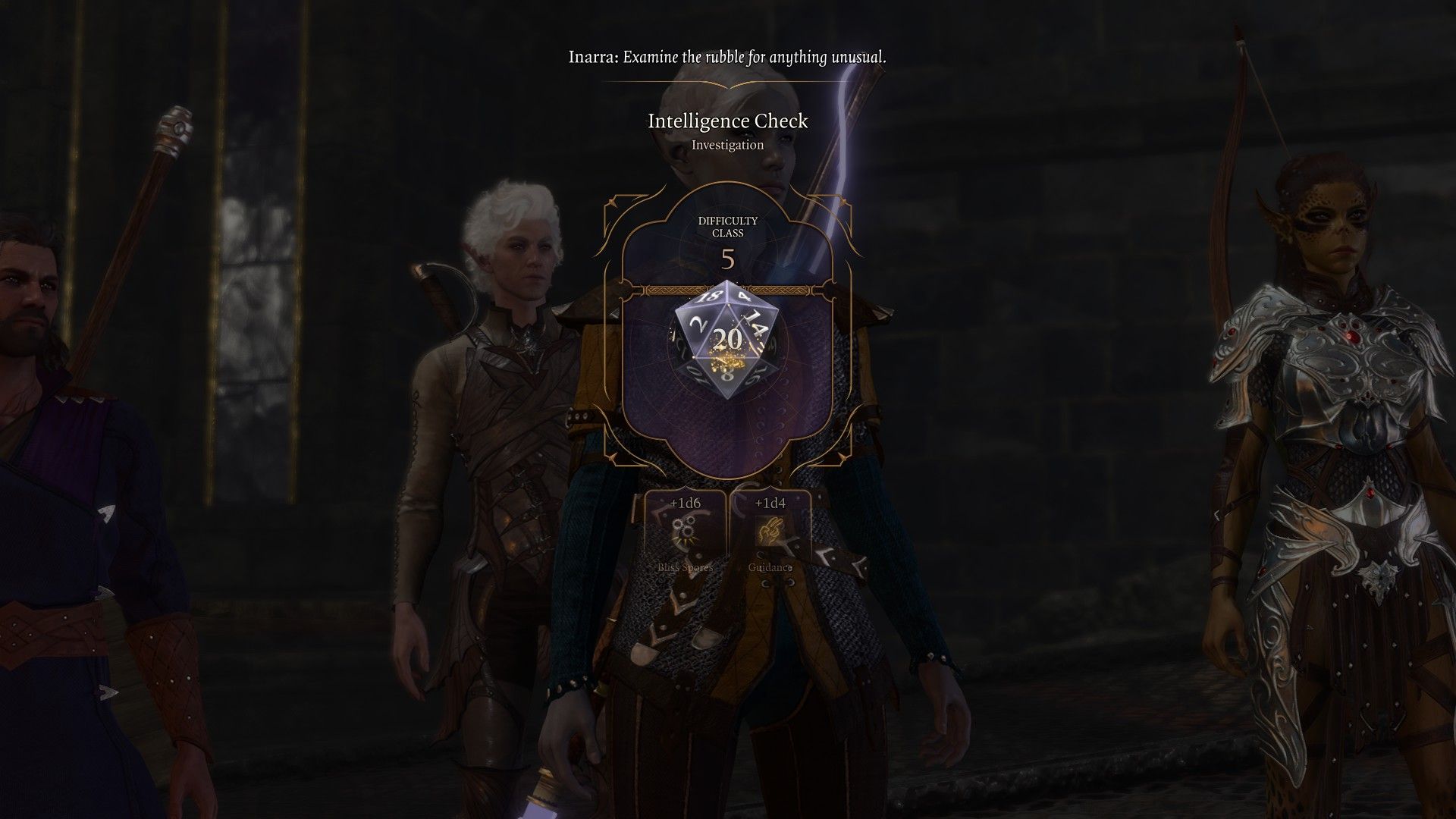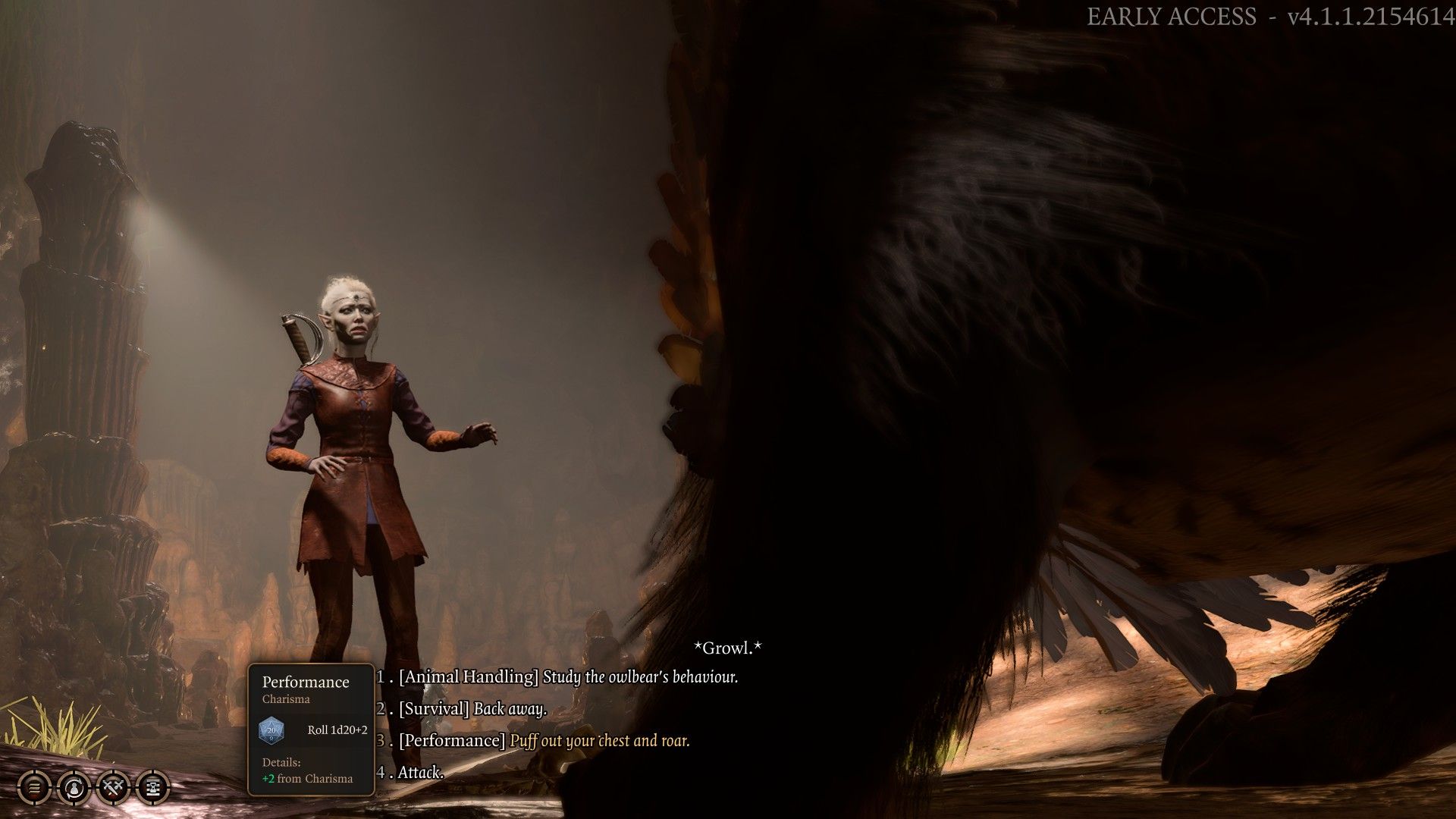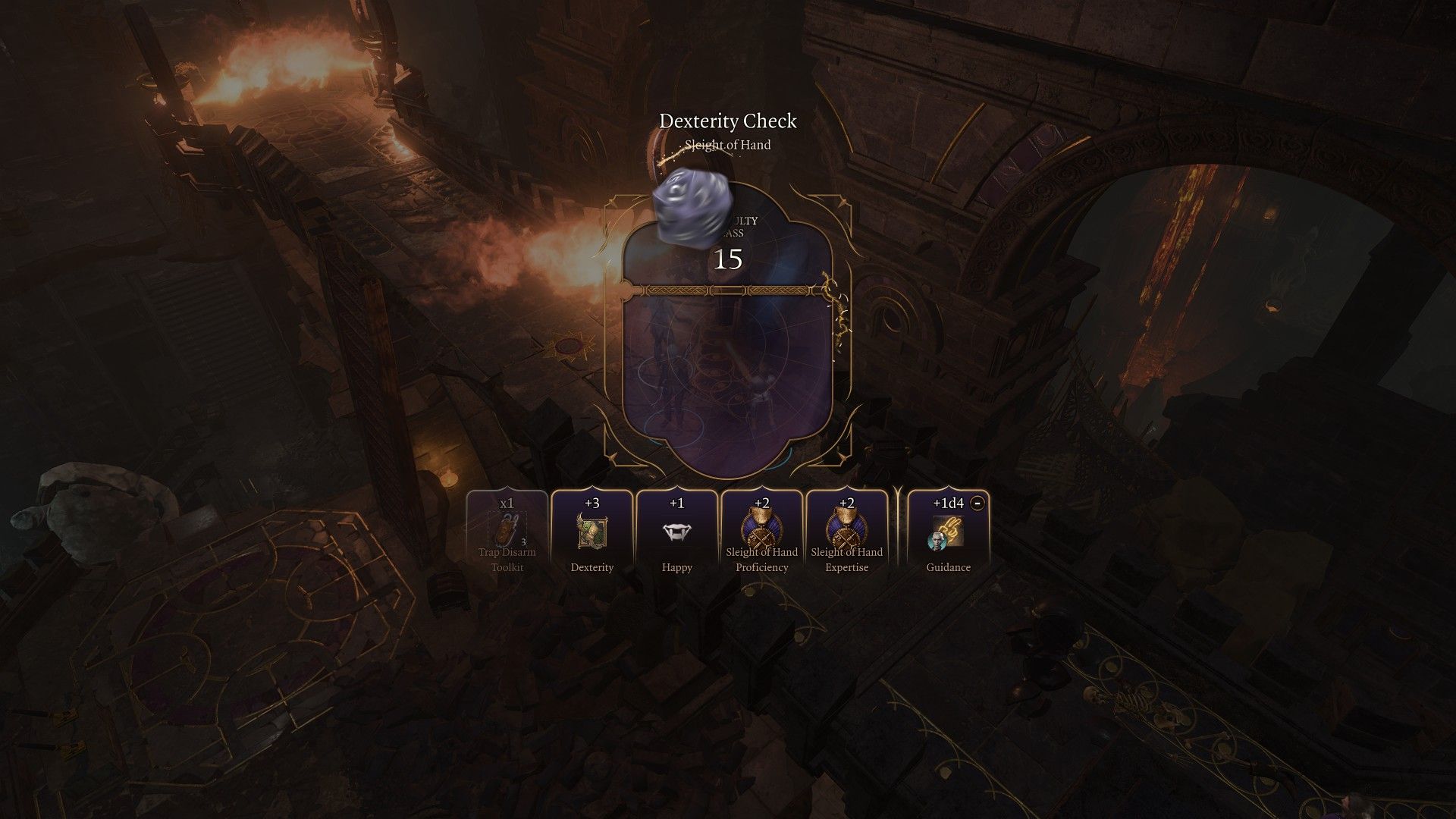Quick Links
Making rolls on choice-based decisions gives a little flair of consequence and chaos in Baldur's Gate 3. When trying to persuade that enemy not to fight you or when you're trying to best that dwarf in a one-on-one arm-wrestling contest, you may notice that some of these situations are more difficult to resolve or achieve. That's where Difficulty Class comes in.
Whether you're a Bard or a Fighter, the Difficulty Class of certain situations can humble you. The dice can humble you. Difficulty Class will determine your fate for the entirety of the game. But what determines a Difficulty Class, and what does the Difficulty Class mean for your beloved characters?
Difficulty Classes And Task Standards
The Difficulty Class (or DC) is a measurement of how easy or hard it is to solve a problem. If the DC is low, you have a higher chance of success; the opposite is true for high DCs.
In the Player's Handbook, there is a set table for understanding how easy or hard a DC truly is:
DC | Difficulty |
|---|---|
0 | Impossible To Fail |
5 | Very Easy |
10 | Easy |
15 | Medium |
20 | Hard |
25 | Very Hard |
30 | Nearly Impossible |
If you're unsure of the DC of the problem you're facing, you can see that number displayed when you choose a dialogue option with [brackets] of which ability is being checked against the Difficulty Class. It sits at the top of the die image.
Meeting or exceeding that number means that you have succeeded. Rolling lower than the Difficulty Class score means you fail.
Difficulty Class Against Other Characters
Sometimes, the Difficulty Class is not a fixed number set by how hard the task is. Instead, it is calculated by an opposing stat or roll of another character - usually called a "roll-off." This is best seen demonstrated during Stealth rolls.
For example, when attempting to sneak past another character, you'll need to roll Stealth, but you'll be set against their Passive Perception (or a Perception roll if they're actively looking for you). Their Passive Perception, calculated by 10 + their Perception skill bonus (Wisdom), is the number your Stealth roll must beat to succeed.
This means that there is great variability in what the DC can be. If you want to try calculating it, you can right-click on a character and Examine them. This will display their stats, and you can calculate your chance of success by spying on the opposing skill of your action.
How To Meet Or Beat Difficulty Classes
When calculating whether your die beats the Difficulty Class, you add the number of the die roll to any applicable bonuses (or penalties) you may have. The total sum of your die, bonuses, and penalties is the number that is matched against the Difficulty Class.
Again, if the total is the same or higher than the Difficulty Class, you succeed. If it is lower, you fail.
A good trick to reinforce that rolling the same amount as the Difficulty Class means success is by remembering the phrase: "Meets it beats it."
There are two exceptions to the rule of rolling higher or lower than the Difficulty Class:
- If you roll a (Natural) 1, you automatically fail. No bonuses are applied.
- If you roll a (Natural) 20, you automatically succeed, even if your bonuses don't help you meet the DC.
There are very, very few exceptions to Natural 1's and 20's in Baldur's Gate.
In any other case, if you're not sure if you can roll well against a Difficulty Class, you can check your bonuses by two methods:
- Hover your cursor over the bracketed dialogue tags for a condensed list of your bonuses and penalties.
- Click on the dialogue tag or roll of your choice and see the bonuses and penalties displayed at the bottom beneath the die.
These are all added to your final amount calculated against the Difficulty Class.
In the example pictured above, Astarion rolls a Sleight of Hand Check against a Difficulty Class of 15. He has several bonuses:
- +3 Dexterity
- +1 for drinking blood
- +2 for Sleight of Hand Proficiency and another +2 for Expertise
- +1d4 (1-4 potential) from a Guidance spell
This is a total potential of +9-12 in bonuses that will be added to his die when it stops rolling. To succeed his check, he must roll at least a six or higher.
If you have the potential to cast spells like Guidance to help your rolls, you may see a tag that states: "+Add Bonus." Click this to see your options of bonuses you can add freely to your roll.

